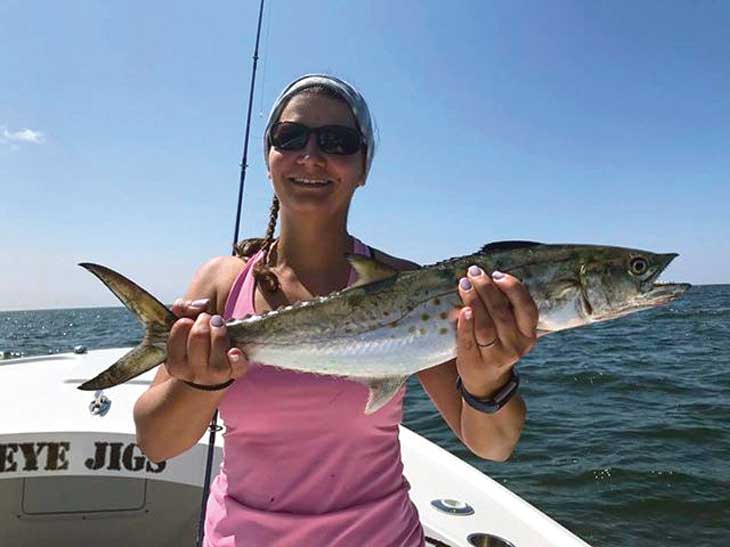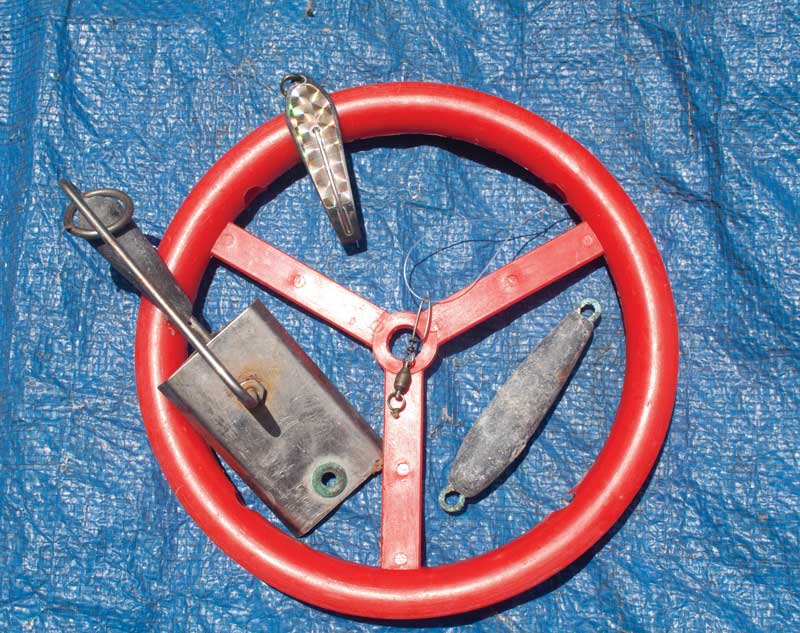Spanish mackerel visit the Upper Bay during the summer when the water temperature rises to their comfort level. They feed on small baits by slashing through the schools with lightning speed and usually hit metal spoons with the same gusto.

They show up in the Lower Bay much earlier in the year and are normally available by the first of June. Here they will stage around structures such as the tunnel tubes of the Chesapeake Bay Bridge Tunnel and the rips where Bay and ocean water collide.
One of the interesting facts about Spanish off the coast of Virginia is their behavior during a hard southwest wind. The wind will cause the air temperature to soar into triple digits, but because it blows out the warm surface water and allows the colder bottom water to move inshore, the Spanish will move well off the beach. It is also fun to watch the tourists run into the ocean to cool off and then turn into blue ice when they meet that 50-degree bottom water.
Because Spanish mackerel like a fast-moving bait, trolling is the best way to catch them. Yes, you can catch a Spanish by casting, but for every one you catch casting lures another angler will catch ten on the troll.
The trolling set up that has worked for me is quite simple. I use a #0 Huntington Drone silver spoon with the welded ring on the spoon tied directly to 30 feet of 15-pound Hi Seas mono line. The leader is then tied to a ball-bearing snap swivel that is connected to either a Huntington #1 planer or a one to three-ounce trolling sinker. The weight of the sinker depends on sea conditions and how deep I want the spoon to run.
Trolling speed for Spanish mackerel is between five and seven knots. At this speed the 15-pound leader is going to twist no matter how many ball bearing swivels you use. Having one in the mix will slow down the inevitable, but it won’t stop the twisting.
Before I leave on a Spanish mackerel trip, I tie up at least six to 10 rigs. Then I wrap the rigs on leader spools so they are ready for action. Since I troll four rods, two with planers from the flat lines and two with sinkers from the outriggers, that gives me replacement rigs for at least one go-round. I will also put spoon rigs on the four rods I am going to use so when I begin fishing, all I have to do is connect a sinker or planer to the ball bearing snap swivel. The 30-foot leader is wrapped around the reel.

Since I am using 30-foot leaders, the Spanish mackerel must be hand-lined to the boat once the sinker or planer comes aboard. This is when the twisting becomes a problem. An experienced mate can keep the leader from twisting by allowing it to blow out to the side, but those with less experience will let the leader collect on the deck and then it is game over.
Once the leader is tangled, do not try to untangle the mess. Cut it off, save the snap swivel and spoon, and tie on one of the new leaders you brought along. The entire procedure should not take more than a few minutes.
Now that you are all rigged up, where do you find the Spanish mackerel? Most of the time you will find them busting water under diving birds. This action normally occurs at dawn and dusk, so to catch the best of the Spanish bite you should be on the water by o’dark thirty.
When the mackerel are on the surface, they may be in the company of bluefish. When I first started to fish for Spanish, someone told me to go faster to get away from the blues. I have yet to go that fast. When blues are in the mix, just put them in the box and keep on fishing.
In the Virginia portion of the Bay, the rips at the tunnel tubes are pretty reliable producers of Spanish mackerel in the summer. The current has to be running hard and the time of day is still early or late, but most of the time the Spanish will be there.
In the ocean it is wrecks and reefs. Look for the same breaking fish under diving birds to find the action.
By Eric Burnley